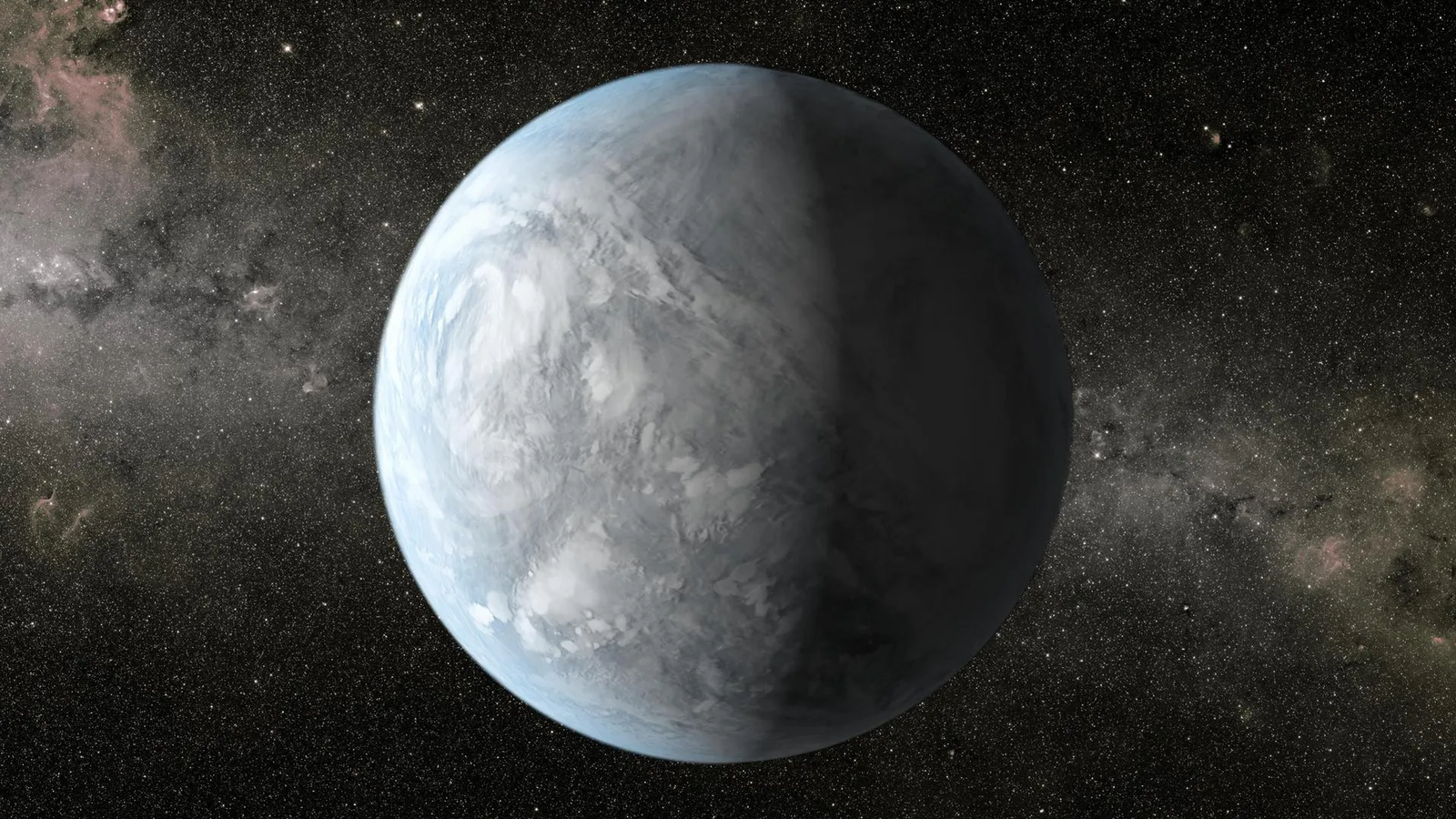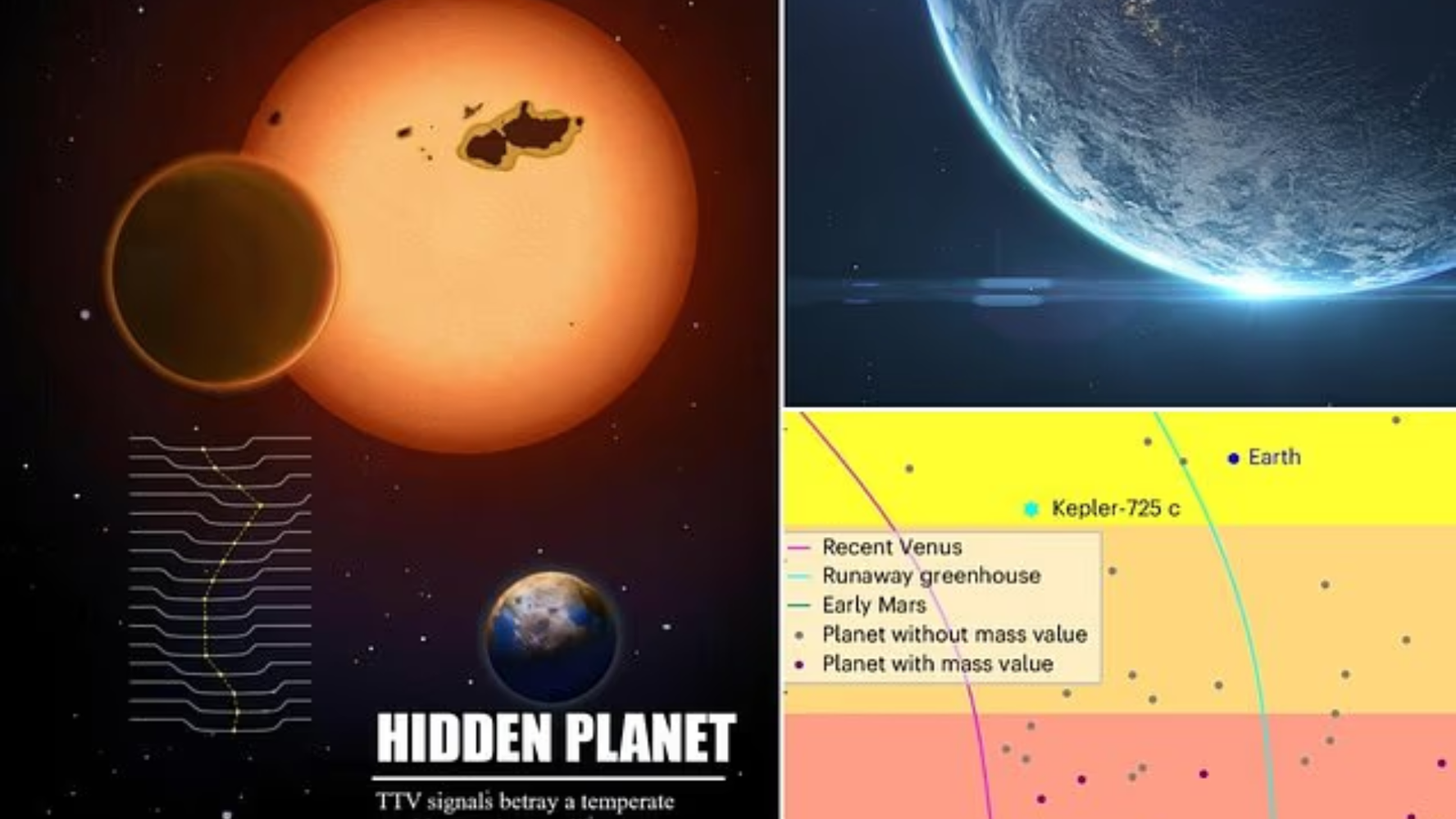What Is Kepler-725c? A Breakthrough Super-Earth in the Habitable Zone
Astronomers have discovered Kepler-725c, a Super-Earth in the habitable zone of its sun-like star. Located hundreds of light-years away, this newly identified planet completes an orbit every 207.5 days. The discovery was made using the Transit Timing Variation (TTV) technique, a powerful tool for identifying planets indirectly.
technique, a powerful tool for identifying planets indirectly.
According to scientists, Kepler-725c is the second planet in its system and demonstrates features that could allow for the presence of life.
Why This Super-Earth in the Habitable Zone Matters for Life
Kepler-725c resides in the Goldilocks zone, where temperatures are not too hot or cold—just right for liquid water to exist. The possibility of water makes the planet a strong candidate for habitability.
“The planet’s location and mass make it one of the most Earth-like Super-Earths found so far,” noted lead astronomers. “This increases the odds of it having conditions suitable for life.”
Transit Timing Variation (TTV): How Kepler-725c Was Discovered
Instead of using traditional light-blocking methods, astronomers used Transit Timing Variation. This method detects slight timing shifts when planets pass in front of their star, indicating gravitational interactions with other unseen planets.
“TTV allows us to detect planets that traditional transit methods might miss,” said Dr. Elena Ramos of the European Space Observatory. “In this case, Kepler-725c revealed itself through the gravitational tugs on its neighboring planet.”
This method continues to revolutionize how we discover planets beyond our solar system.
Could This Super-Earth in the Habitable Zone Support Life?
As a Super-Earth, Kepler-725c is about ten times the mass of Earth. This size likely gives it a thicker atmosphere, which may support stable climate patterns and liquid water.
Still, much remains unknown. Scientists stress that data on its atmospheric composition is essential before concluding its ability to host life.
“Without knowing the levels of oxygen or greenhouse gases,” said NASA scientist Dr. Lily Tan, “we cannot make definitive claims about habitability.”
Global Scientific Reactions to the Super-Earth Discovery
The global astronomy community has reacted with cautious excitement.
- Dr. Maria Chen, an exoplanet researcher at MIT, commented:
“Every time we find a planet like Kepler-725c, we inch closer to understanding our place in the universe.” - NASA’s Exoplanet Program shared on X (formerly Twitter):
“Kepler-725c joins a growing list of worlds that may one day reveal life’s universal truth.”
These remarks highlight how vital such discoveries are to both scientific advancement and human curiosity.
What’s Next for Kepler-725c and the Search for Habitable Worlds?
Observatories worldwide, including the James Webb Space Telescope, are lining up for follow-up observations. Their goal: determine the planet’s atmospheric contents and search for biosignatures like:
- Oxygen (O₂)
- Methane (CH₄)
- Carbon dioxide (CO₂)
Detecting these elements could push Kepler-725c to the top of the list for potential life-hosting exoplanets.
Public Buzz Around Kepler-725c: The New Super-Earth in the Habitable Zone
The public is captivated. News headlines like “A New Earth?” are trending globally. Enthusiasts on platforms such as Reddit and X are deeply engaged in discussing the discovery.
One viral post read:
“Kepler-725c could be a second Earth—or a mirror showing how vast and mysterious our universe is.”
This widespread attention reflects the growing connection between scientific discovery and public imagination.
Final Thoughts: Looking to the Stars for Answers
Kepler-725c may not hold all the answers, but it offers one more clue in the cosmic puzzle. As technologies advance and research continues, such planets will help shape the future of space exploration.
Whether it turns out to be habitable or not, this discovery reminds us of one simple truth: the search for life continues—and the universe still has stories to tell.




